This easy London broil recipe highlights the bold, beefy flavor of top round steak and produces reliably juicy results with minimal effort. Your only task as a cook is to avoid overcooking the steak. This cut should be served medium-rare.
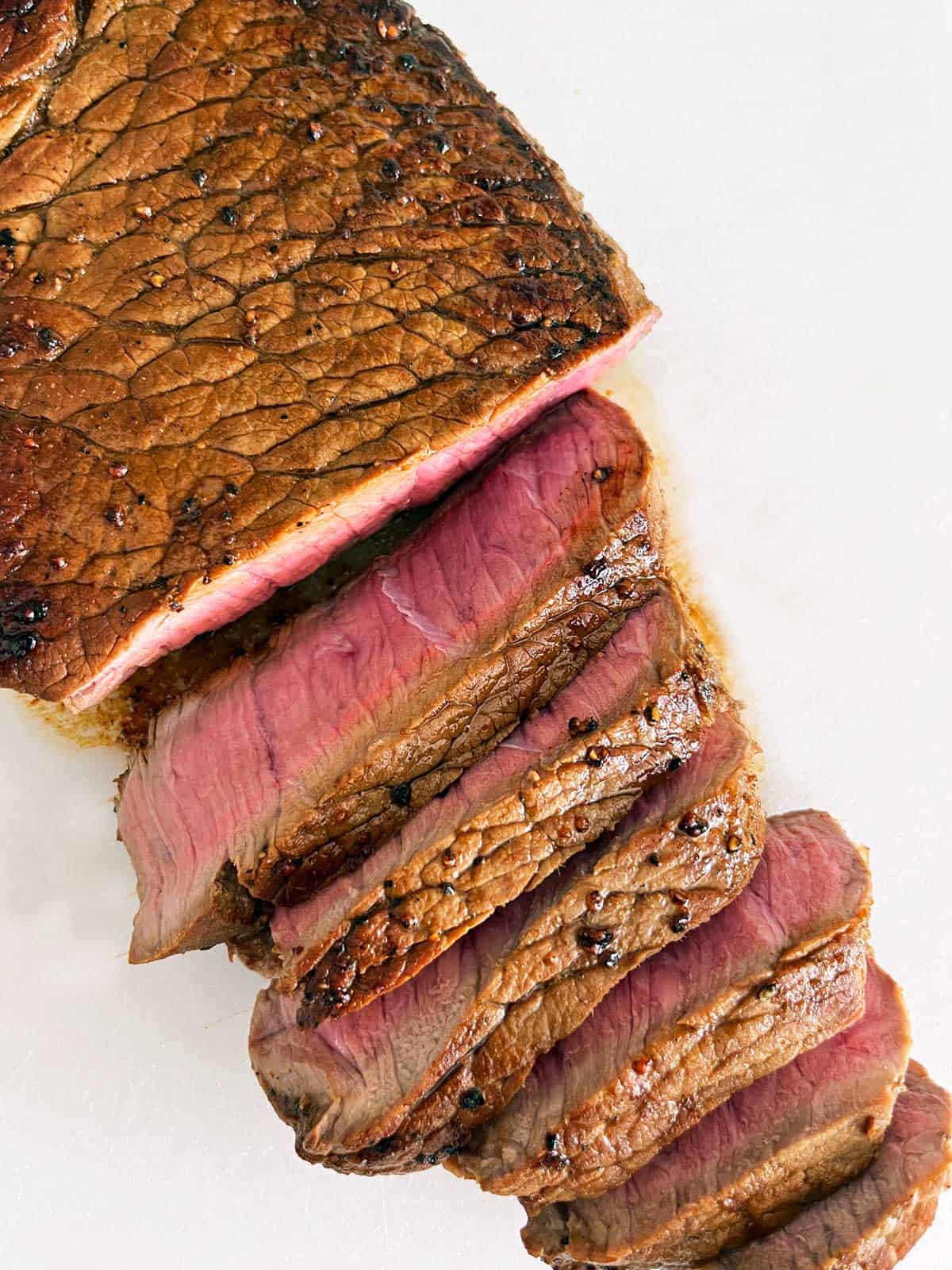
Much like tri-tip roast, top round steak is an inexpensive yet flavorful cut. "London broil" refers to the cooking technique used for this cut: It's usually broiled or grilled, but I like to cook it on the stove. It's an easy method: I marinate the steak, quickly sear it on both sides in a cast-iron skillet, then leave it in the skillet for a few minutes to finish cooking. The result: a juicy and flavorful steak that tastes great freshly cooked or as leftovers.
Ingredients
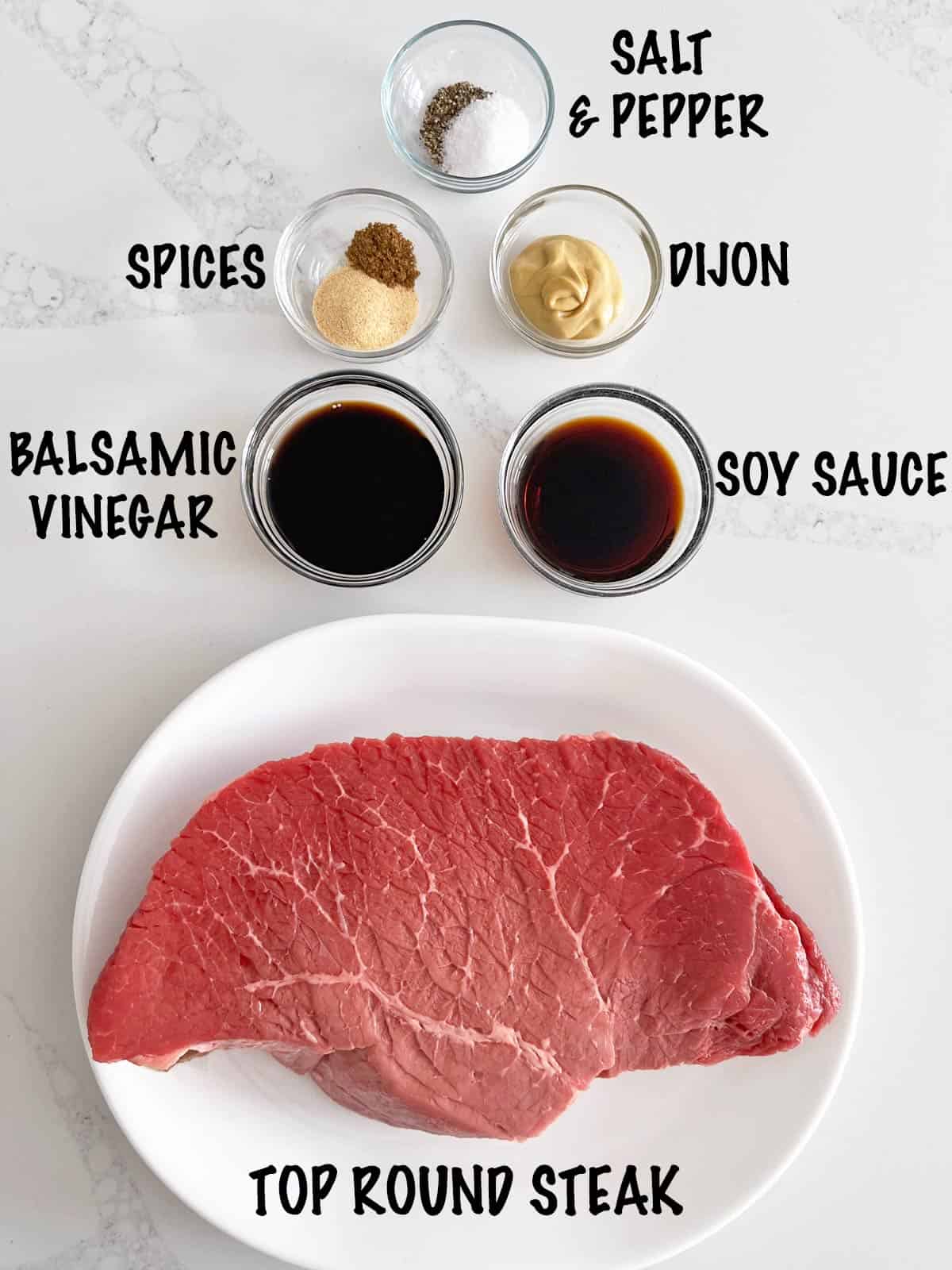
See the recipe card for exact measurements. Here are my comments on the ingredients.
- For the marinade: Balsamic vinegar, soy sauce (or a gluten-free alternative), Dijon mustard, garlic powder, and cumin. You can use any mustard you like, but I like the creaminess and flavor of Dijon mustard.
- Top round steak: I usually get it at the butcher counter at Whole Foods Market. It's also available in many supermarkets.
- To season: Kosher salt and black pepper.
Instructions
The detailed instructions and step-by-step photos are included in the recipe card. Here's a quick overview.
Combine the marinade ingredients. Place the steak in a resealable bag. Pour the marinade into the bag and rub it all over the steak. Seal the bag and place it on a plate in the fridge for at least 4 hours or overnight.
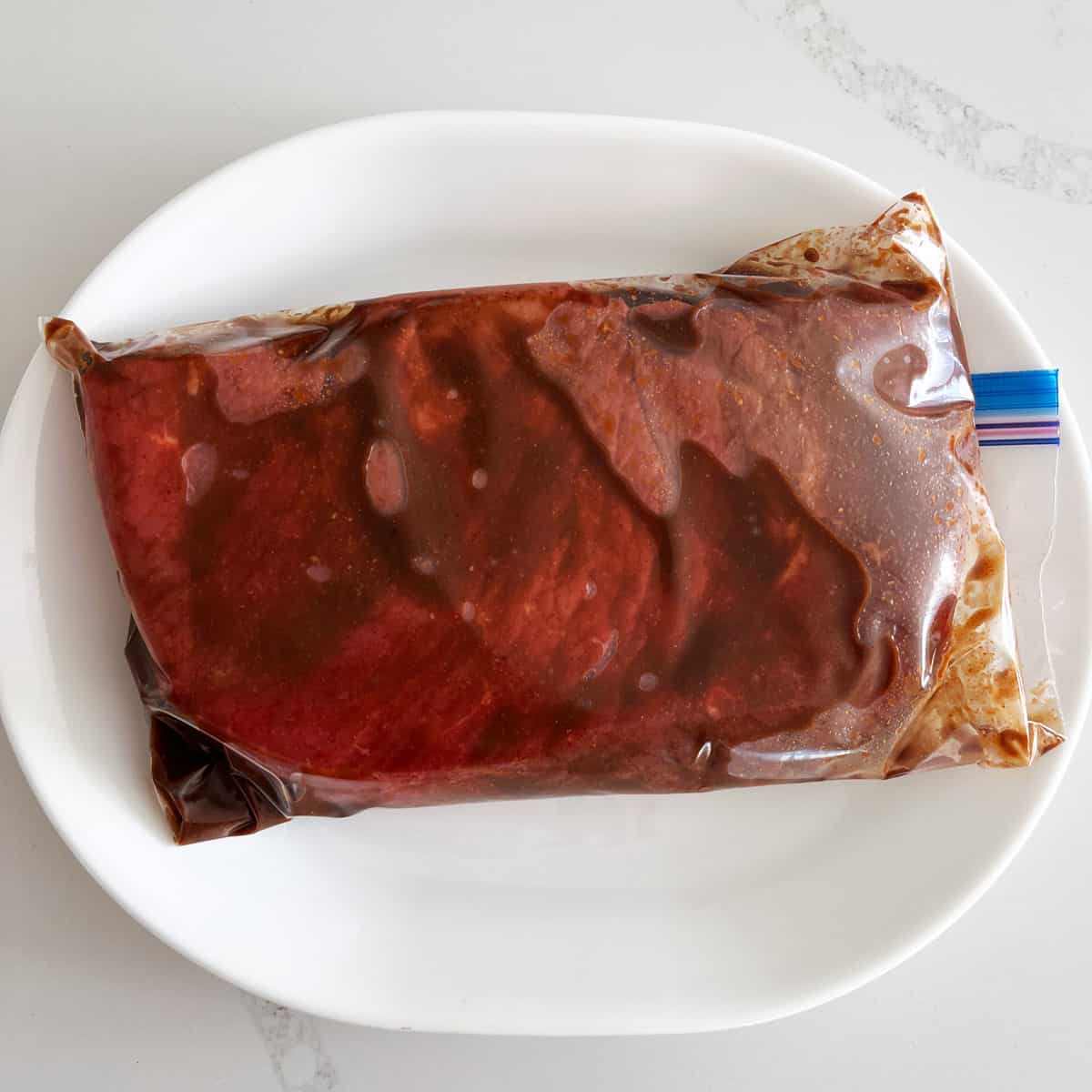
Remove the steak from the fridge an hour before cooking to allow it to reach room temperature. Heat a cast-iron skillet over medium-high heat. Remove the steak from the marinade, pat it dry with paper towels, and season it with salt and pepper. Place it in the hot skillet and cook it for 3 minutes per side.
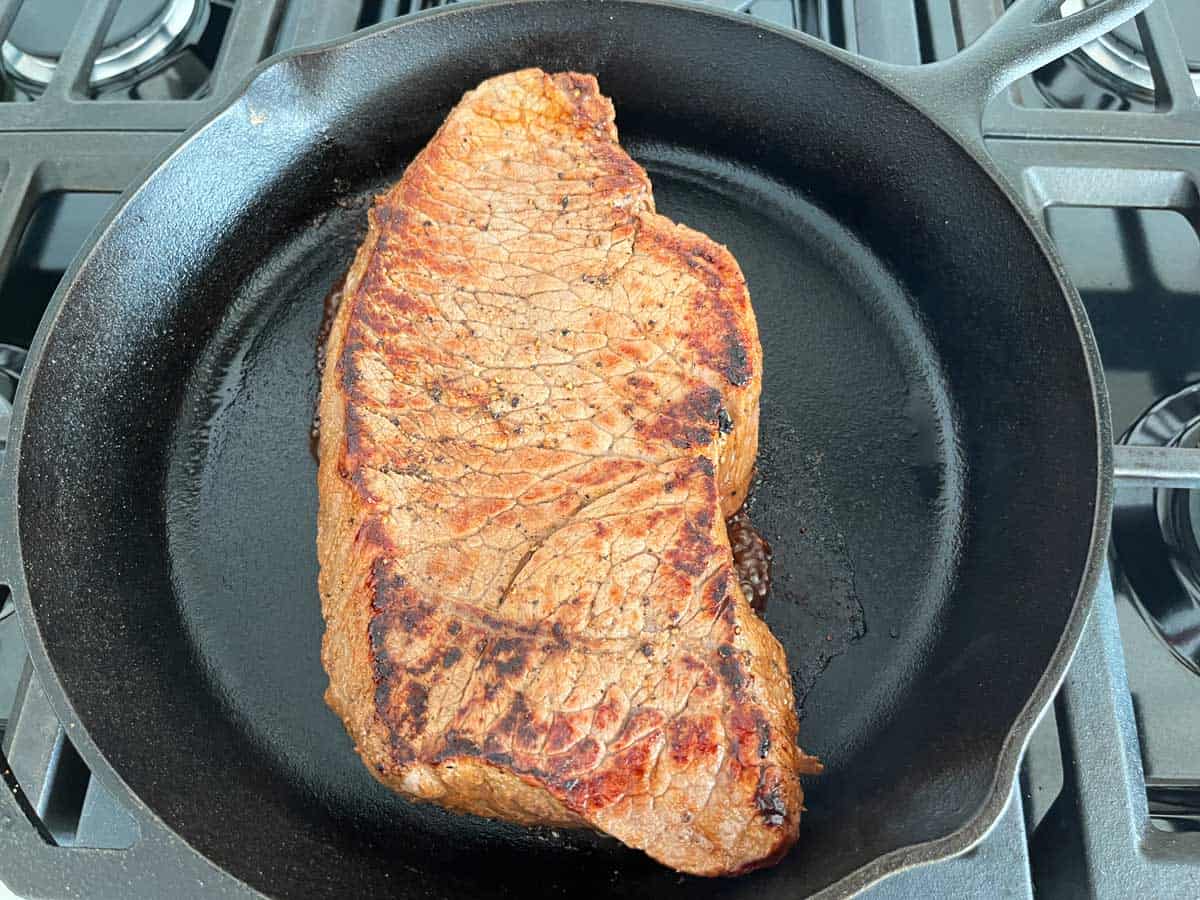
Using oven mitts, remove the skillet from the heat. Tent it with foil to allow the steak to rest and finish cooking from the skillet's heat for five minutes. Transfer the steak to a cutting board, slice it thinly, and serve.
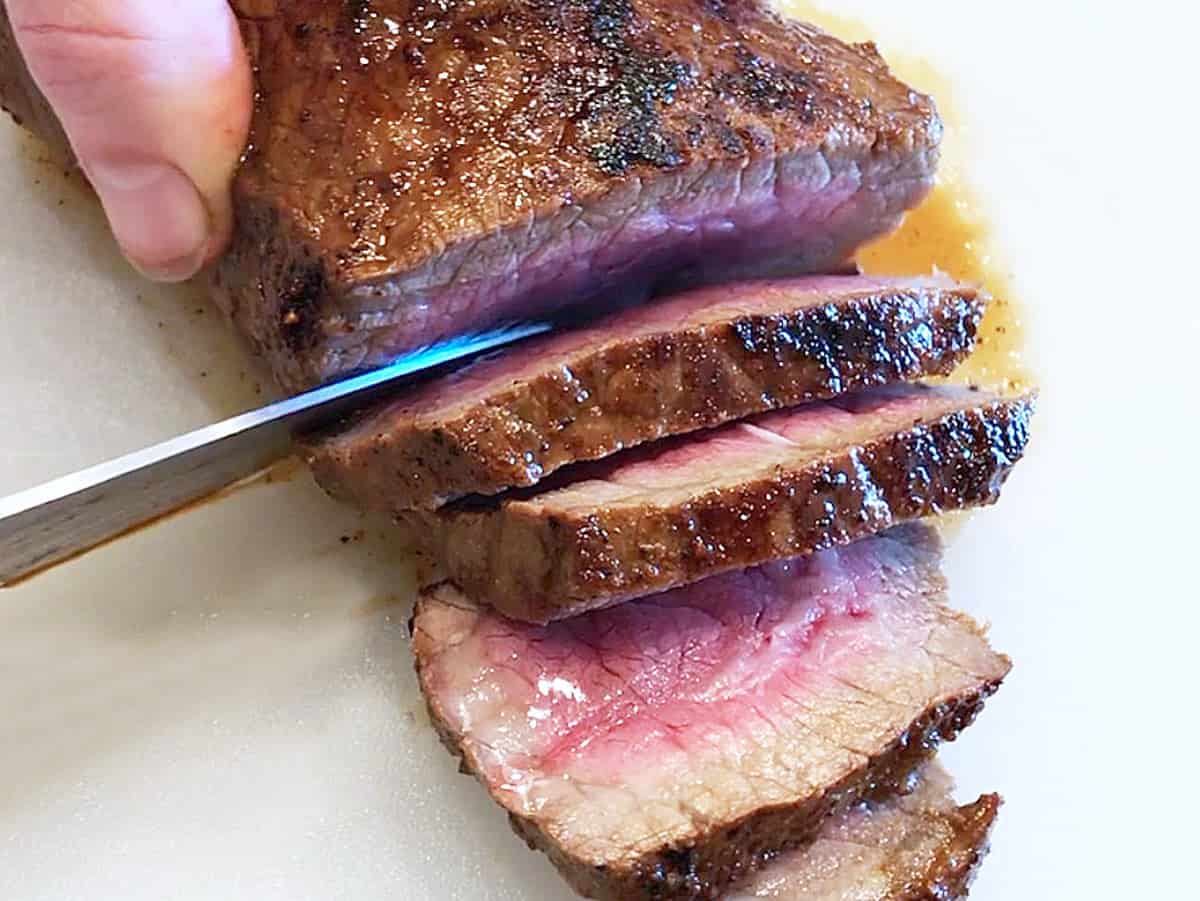
This was delicious. This was my second time making this recipe. The first time, I followed your instructions, and the steak was too rare for my taste. Tonight, I cooked it for 4 minutes per side and it turned out PERFECT.
Andy
Read more comments
Recipe Tips
- Tender beef cuts like flat iron steak, New York strip, and ribeye steak don't need a marinade, but London broil is tough and benefits from a vinegar-containing marinade that helps break down the meat fibers.
- To keep it tender, cook the steak to rare (120°F) and certainly to no more than medium-rare (135°F). Note that the USDA says we should cook steaks to 145°F.
- Slicing the cooked steak thinly helps with chewing. Other tough cuts of beef, like flank steak and skirt steak, are also sliced thinly.
- If your cast-iron skillet is well seasoned, there's no need to add oil to the pan. If you'd like to add fat to the skillet, it's best to use fats appropriate for high-heat cooking, such as avocado oil or ghee.
- It's perfectly fine to marinate the steak while it's frozen. Simply place the frozen steak in a resealable bag with the marinade and place it in the fridge overnight. However, when it's time to cook the steak, it should be fully thawed.
Serving Suggestions
London broil is a versatile main dish. You can serve it with any side. I often serve it with one of the following:
- Mashed cauliflower
- Steamed asparagus
- Sauteed mushrooms
- Microwave sweet potato
- Creamed spinach
- Roasted Brussels sprouts
Alternatively, I serve it with a side salad, such as asparagus salad, tomato salad, or the salad shown below of tomatoes, hearts of palm, cilantro, and olives.
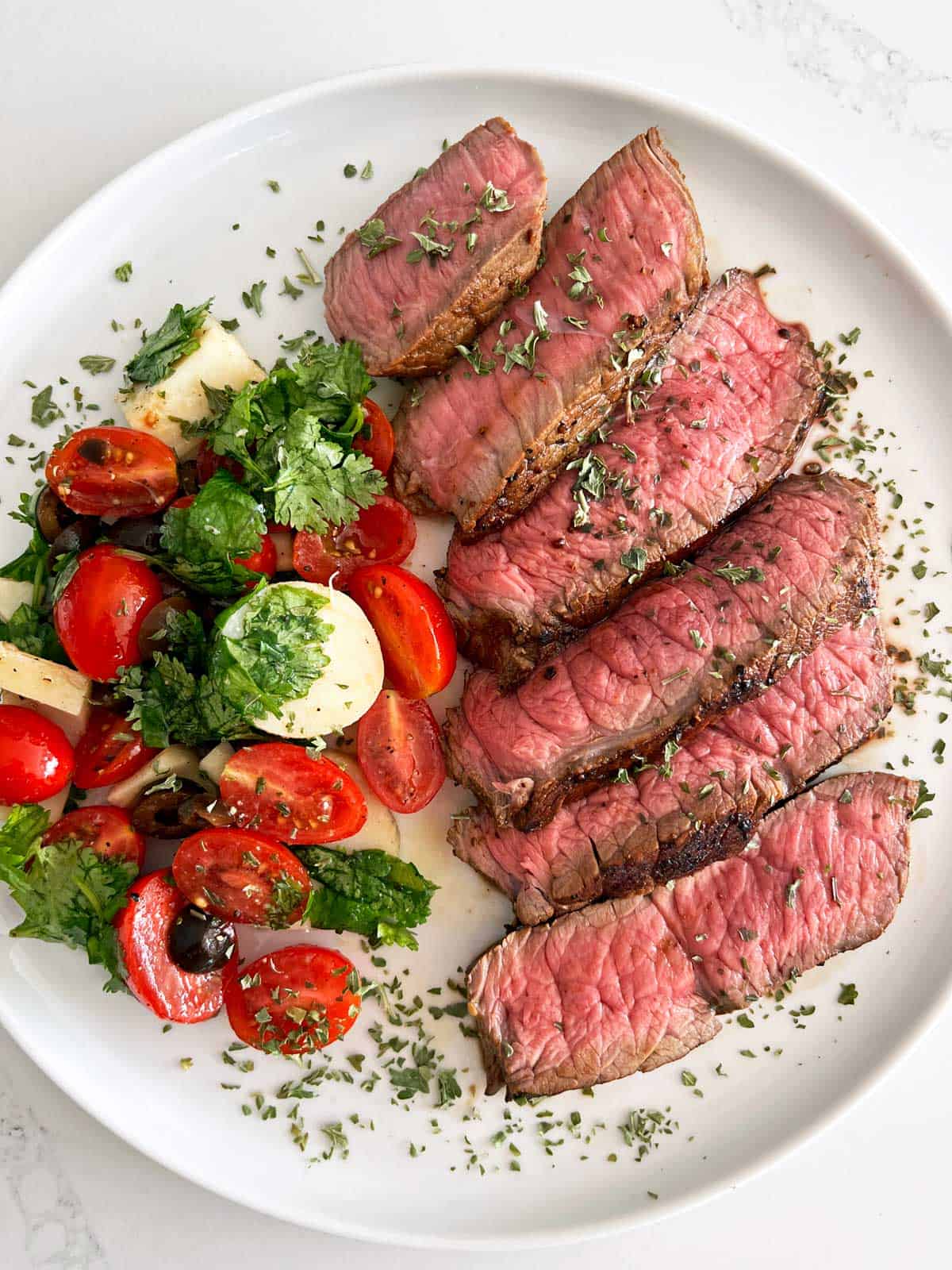
Storing and Using the Leftovers
You can keep the leftovers in a sealed container in the fridge for 3-4 days. Thinly sliced and served cold, they make the perfect topping for salads such as this arugula salad. Sometimes, I use them in this Cobb salad instead of chicken.
I also like to make a plate, as shown below, of cold beef slices with fresh-cut veggies, salsa or sriracha mayo, and quick pickles or store-bought pickles.
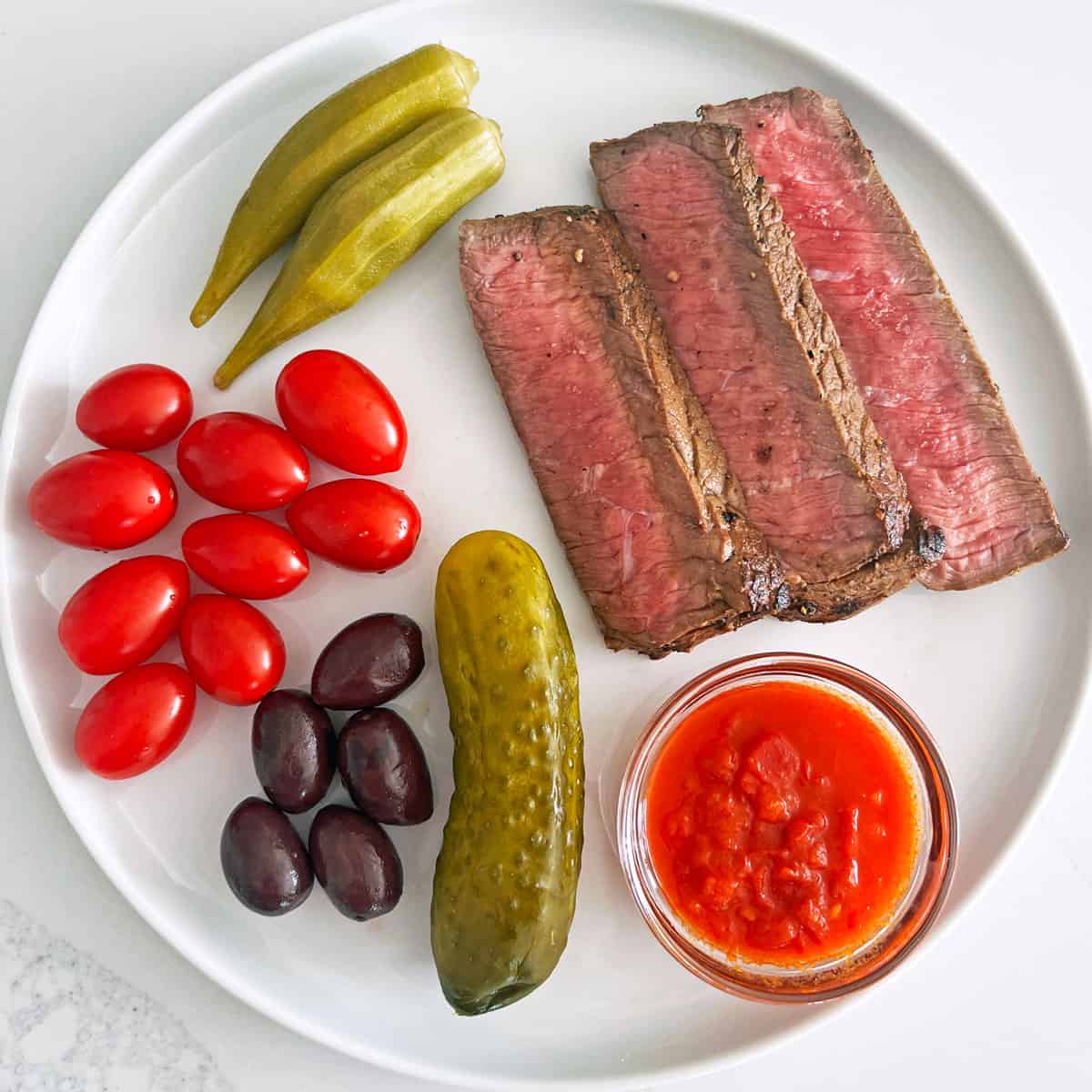
Recipe Card
Easy Stovetop London Broil Recipe
Video
Ingredients
- 2 tablespoons balsamic vinegar
- 2 tablespoons soy sauce - or a gluten-free alternative
- 1 tablespoon Dijon mustard
- 1 teaspoon garlic powder
- ½ teaspoon ground cumin
- 1.5 pound top round steak - 1 - 1.25 inches thick
- 1 teaspoon Diamond Crystal kosher salt - or ½ teaspoon of any other salt, including Morton kosher salt
- ¼ teaspoon black pepper
Instructions
Marinate the steak:
- Whisk the balsamic vinegar, soy sauce, mustard, garlic powder, and cumin in a small bowl.
- Place the steak in a Ziploc bag. Pour the marinade into the bag and rub it all over the steak. Seal the bag, removing as much air as possible. Place the bag on a plate in the fridge for at least 4 hours or overnight. If you're home while the steak is marinating, flip it occasionally.
Cook the steak:
- Remove the steak from the fridge 1-2 hours before cooking to allow it to reach room temperature. Heat a well-seasoned cast iron skillet over medium-high heat until very hot, for about 3 minutes.
- Remove the steak from the bag and pat it dry with paper towels. Sprinkle it on both sides with salt and pepper.
- Place the steak in the hot skillet. Cook it for 3 minutes without moving.
- Flip the steak to the other side (it should be deeply browned and slightly charred on the first side) and cook for 3 more minutes, again without moving it.
- Using oven mitts, remove the skillet from the heat. Tent it with foil to allow the steak to rest and finish cooking from the skillet's heat for 5 minutes.
- Transfer the steak to a cutting board. Slice it thinly and serve.
Notes
- If you have a smoke alarm near your kitchen, open your kitchen windows and run your range hood fan on high while you sear the steak.
- If you have a frozen top round steak, it's perfectly fine to marinate it while it's still frozen. I often do. Simply place the frozen steak in a resealable bag with the marinade and place it in the fridge overnight. However, when it's time to cook it, the steak should be fully thawed.
- If your cast-iron skillet is well seasoned, there's no need to add oil to the pan. If you'd like to add fat, use fats appropriate for high-heat cooking, such as avocado oil or ghee.
- The best way to make sure the steak is done to your liking is to use an instant-read thermometer. Rare is 120-125°F (a warm red center). Medium-rare is 130-135°F (mostly pink center with some red in the middle). However, the USDA recommends cooking meat to an internal temperature of 145°F.
- You can keep the leftovers in a sealed container in the fridge for 3-4 days. Thinly sliced and served cold, they make the perfect topping for salads. You can also freeze them in freezer bags for up to three months.
Nutrition per Serving
Save this Recipe!
We will also add you to our weekly newsletter. Unsubscribe anytime. See healthyrecipesblogs.com/privacy/ to learn how we use your email.
Disclaimers
Most recipes are low-carb and gluten-free, but some are not. Recommended and linked products are not guaranteed to be gluten-free. Nutrition info is approximate. Please verify it independently. The carb count excludes non-nutritive sweeteners. Please read these Terms of Use before using any of my recipes.


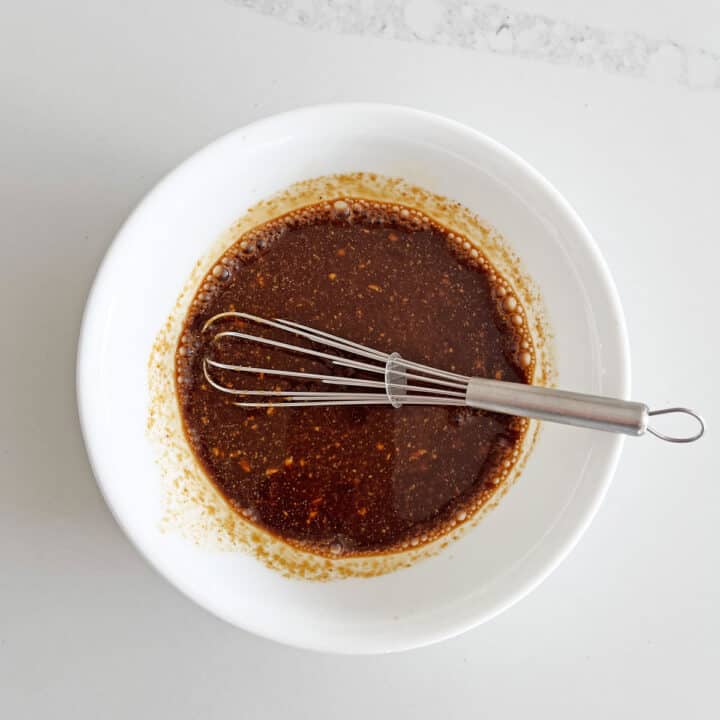
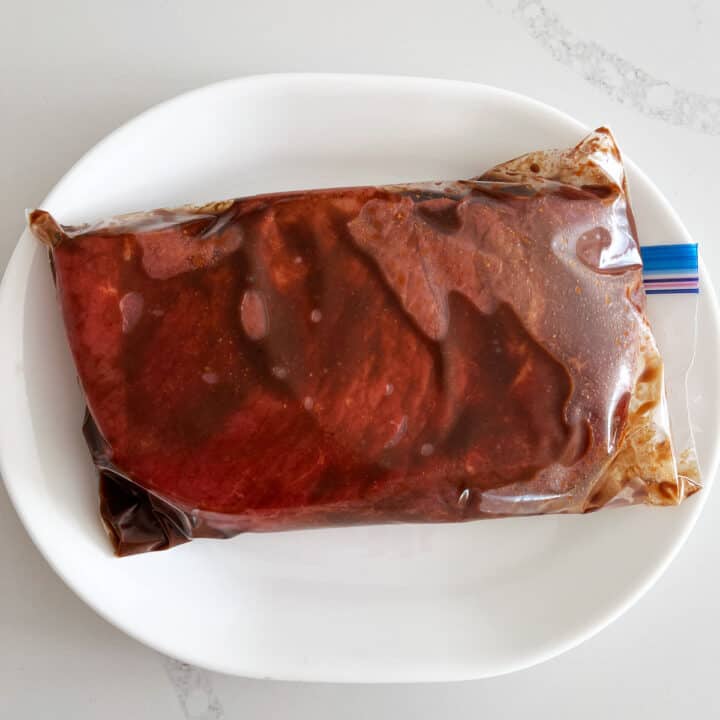
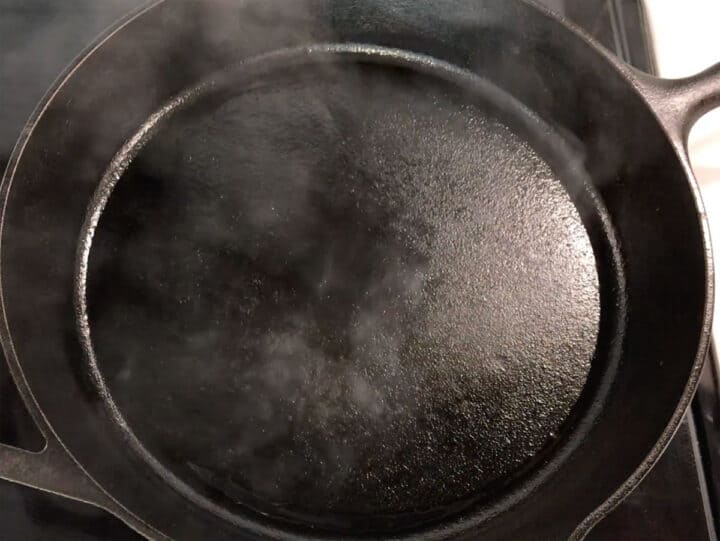
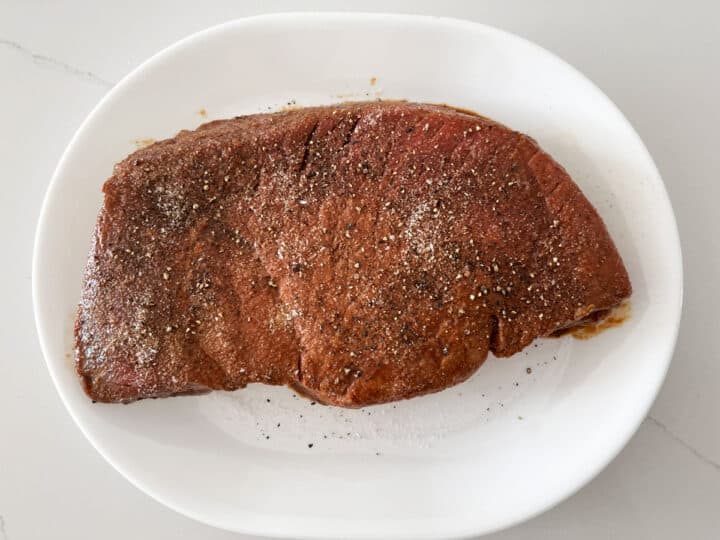

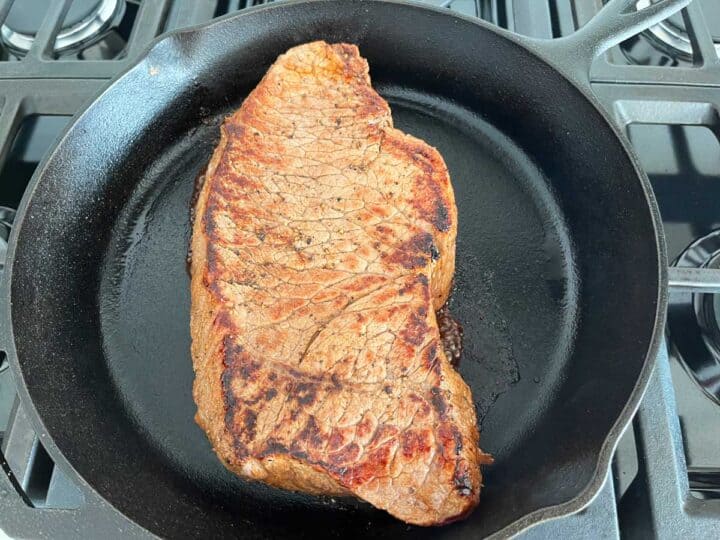
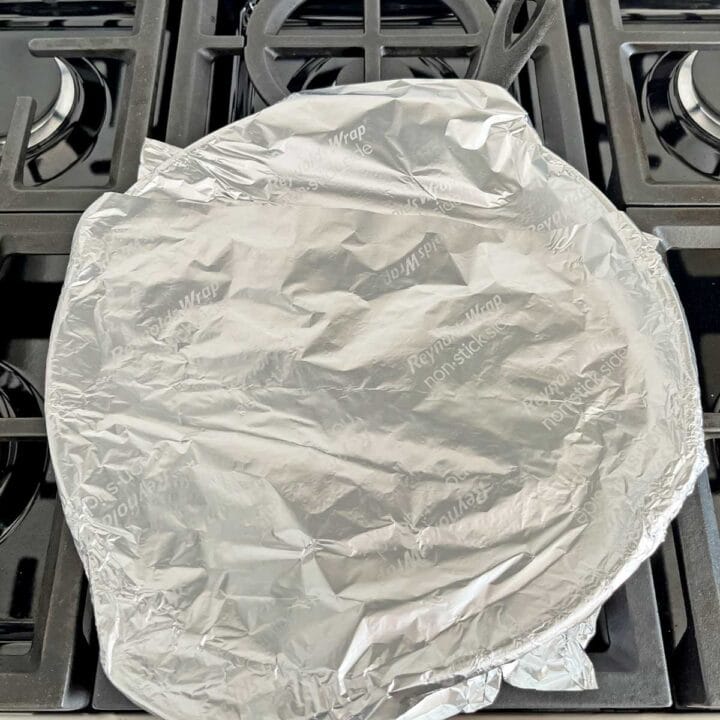

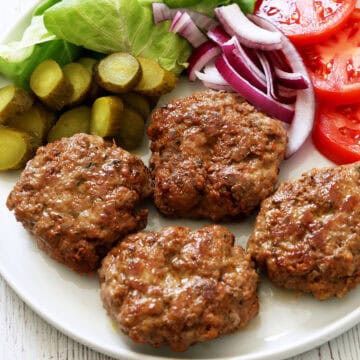
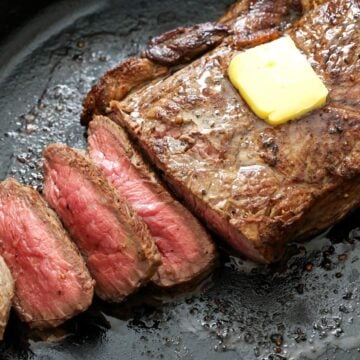

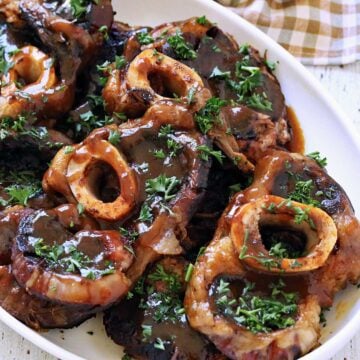
Sue Travis says
if you dont have a cast iron pan will stainless steel work?
Thank you
Vered DeLeeuw says
Hi Sue,
I only tested this recipe in a cast-iron skillet. Stainless steel should work. However, I prefer to heat a stainless steel pan slowly over medium heat, so the steak will likely need 4-5 minutes on each side. After resting it, check with an instant-read thermometer. If it's undercooked, you can place it in a 400°F oven for 5 minutes to finish cooking.
Andy says
This was delicious. This was my second time making this recipe. The first time, I followed your instructions and the steak was too rare to my taste. Tonight, I cooked it for 4 minutes per side instead of three and it turned out PERFECT.
Vered DeLeeuw says
I'm glad you enjoyed this recipe, Andy! Thank you for the feedback.